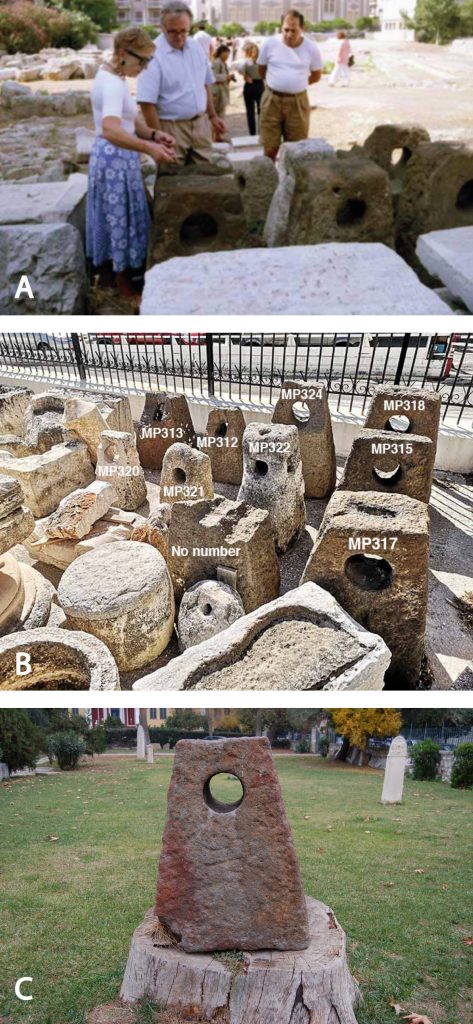Sourcing the Zea Limani Stone Anchors, Piraeus, Greece: New data for identifying shipbuilding locations and ancient Mediterranean sailing routes - 2021
Dr Patrick Quinn and Dr Margie Burton
 This project will investigate the raw material sources of a distinctive type of ancient stone anchor that was originally highlighted by Honor Frost in the 1980s. This rare form may have been used on 5th century Greek oared ships called ‘triremes’. The tall pyramidal shape would have taken up relatively little space on deck, yet it could have stood upright as the vessel pitched and rolled in heavy seas. Frost studied a group of these rare pyramidal stone anchors at Piraeus Archaeological Museum in Athens. They had been dredged from the remains of 5th century BC boat sheds and slipways in the nearby bay of Zea Limani, where triremes were thought to have been moored. She suggested that some of the anchors may have been made from stone that was not local to Athens and therefore must have been transported from another location aboard the ships.
This project will investigate the raw material sources of a distinctive type of ancient stone anchor that was originally highlighted by Honor Frost in the 1980s. This rare form may have been used on 5th century Greek oared ships called ‘triremes’. The tall pyramidal shape would have taken up relatively little space on deck, yet it could have stood upright as the vessel pitched and rolled in heavy seas. Frost studied a group of these rare pyramidal stone anchors at Piraeus Archaeological Museum in Athens. They had been dredged from the remains of 5th century BC boat sheds and slipways in the nearby bay of Zea Limani, where triremes were thought to have been moored. She suggested that some of the anchors may have been made from stone that was not local to Athens and therefore must have been transported from another location aboard the ships.
By using new and well-established techniques to characterise in detail the mineralogical, micropalaeontological, and chemical composition of the rock used to manufacture the Zea Limani anchors and comparing them to rock specimens collected in the field, this project will shed new light on their raw material sources. The Zea Limani anchors will also be compared to a typologically related stone anchor excavated from Volos in northern Greece. By drawing connections between these anchors and their raw material sources the project will provide new data for identifying locations of ancient ship building and the movement of triremes during the Classical Greek period.
